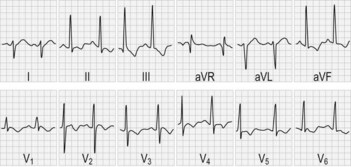68 Friedreich’s ataxia
Salient features
History
• Age of onset (usually the same in each family and ranges from 8 to 16 years of age)
• High-arched foot in childhood in the family (Friedreich’s foot) (Fig. 68.1)
• Scoliosis developing in childhood
• Cerebellar dysarthria (p. 210) and ataxia (p. 201).
Examination
• Cerebellar signs, ataxia being a constant sign
• Impaired vibration and joint sense
• Absence of deep tendon reflexes (caused by degeneration of peripheral nerves)
• Distal muscle wasting (in 50% of cases), especially in the hands.
• Check for nystagmus (present in 25% of the cases), scanning speech, intention tremor
• Examine the heart for hypertrophic cardiomyopathy (Fig. 68.2)
• Check the eyes for optic atrophy (present in 30% of cases)
• Check the spine for kyphoscoliosis
• Check the urine for sugar (10% of patients have diabetes)
• Check IQ, looking for intellectual deterioration
• Tell the examiner that you would like to do a 25 ft (7.5 m) walk test to determine ambulatory capacity.





